Carb-Loading Meal Plans for Endurance Athletes: Conquer Your Next Race with Strategic Fueling
Ever hit a wall during a marathon, feeling your legs turn to lead despite weeks of grueling training?
You’re not alone. Endurance athletes grapple with the constant battle of maintaining sufficient energy stores to power through long distances.
This is where carb loading comes in, a strategic dietary approach designed to maximize your body’s glycogen reserves, the primary fuel source for sustained exercise.
But what exactly is carb loading, and how can you implement it effectively? This comprehensive guide dives deep into the science behind carb loading, explores its benefits and potential drawbacks, and equips you with personalized meal plans tailored to your specific needs.
We’ll also address frequently asked questions to ensure you approach your next race with a full tank and a champion’s mindset.
Let’s get you fueled for victory!
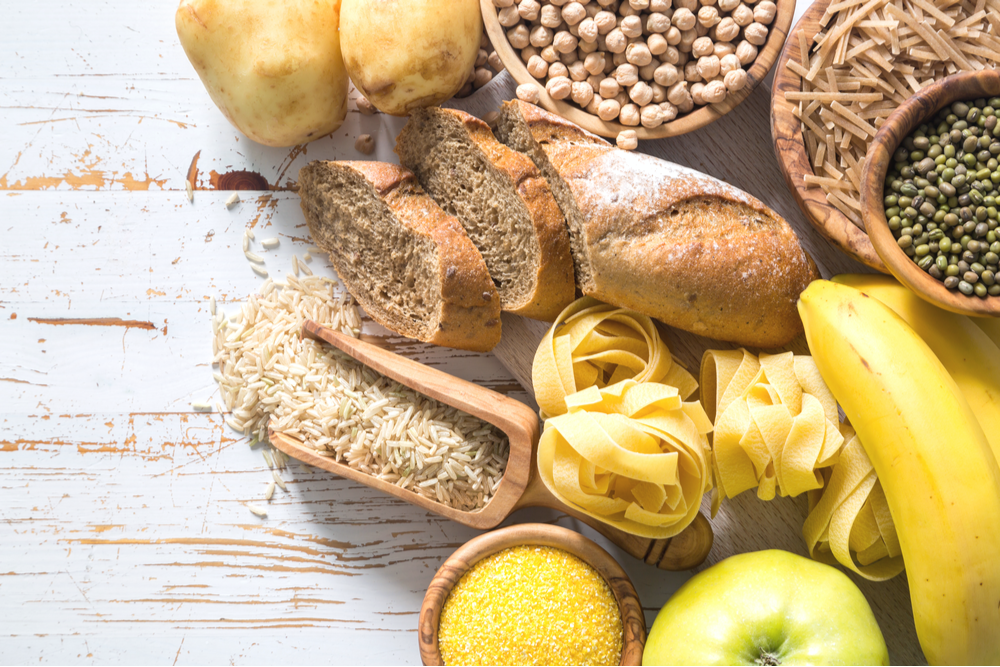
Understanding Carb Loading: A Scientific Breakdown
Imagine your muscles as a network of gas stations. Carbohydrates, broken down into glucose, act as the fuel that keeps these stations pumping.
During exercise, especially prolonged activities like marathons or cycling events, your body burns through these reserves rapidly.
Carb loading aims to artificially top up your glycogen stores, allowing you to maintain a higher energy output for longer durations.
The process works like this:
-
Depletion Phase: In the days leading up to your event (typically 1-3 days), you strategically reduce your carbohydrate intake. This signals your body to upregulate enzymes responsible for glycogen synthesis.
-
Loading Phase: Following the depletion phase, you significantly increase your carbohydrate intake (3.6-5.5 grams per pound of body weight per day) for 24-48 hours. This period allows your muscles to supercompensate, storing more glycogen than usual.
-
Tapering Phase: In the final 24-36 hours before your event, you slightly decrease your carbohydrate intake while maintaining a focus on easily digestible options. This ensures your digestive system is primed for efficient energy absorption during the race.
The key to successful carb loading lies in meticulous planning and tailoring the approach to your individual needs.

Unleashing Your Potential: Benefits of Carb Loading
For endurance athletes pushing their limits, carb loading offers a compelling array of advantages:
-
Enhanced Performance: By maximizing glycogen stores, carb loading can significantly delay fatigue onset, allowing you to maintain a stronger pace for extended periods.
-
Improved Endurance: With a readily available fuel source, your muscles can work harder and longer, translating to a greater ability to conquer challenging distances.
-
Reduced Muscle Breakdown: During prolonged exercise, your body may resort to breaking down muscle tissue for energy. Carb loading helps prevent this by ensuring sufficient carbohydrate availability.
-
Faster Recovery: Replenished glycogen stores post-race can lead to quicker recovery times, allowing you to bounce back from strenuous events more efficiently.
While carb loading boasts impressive benefits, it’s crucial to understand its limitations and potential drawbacks.

Navigating the Nuances: Considerations and Potential Drawbacks
Carb loading isn’t a one-size-fits-all strategy. Here are some factors to consider:
-
Event Duration: Carb loading is most effective for events exceeding 90 minutes. For shorter bursts of activity, the benefits may be negligible.
-
Individual Tolerance: Some athletes experience digestive discomfort with a sudden increase in carbohydrate intake. Experiment beforehand to find your optimal loading window and carbohydrate sources.
-
Timing is Key: Meticulously plan your depletion and loading phases to ensure your body has enough time to both deplete and replenish glycogen stores effectively.
-
Focus on Quality: Not all carbs are created equal. Prioritize complex carbohydrates like whole grains, fruits, and vegetables for sustained energy release.
While carb loading can be a powerful tool, it’s not without its potential drawbacks:
-
Gastrointestinal Distress: A sudden surge in carbohydrate intake can lead to bloating, gas, and diarrhea, hindering performance.
-
Weight Gain: Consuming large amounts of carbohydrates can lead to temporary weight gain due to increased glycogen stores and water retention.
-
Overdoing It: Excessively high carbohydrate intake can lead to blood sugar spikes and subsequent crashes, leaving you feeling drained.
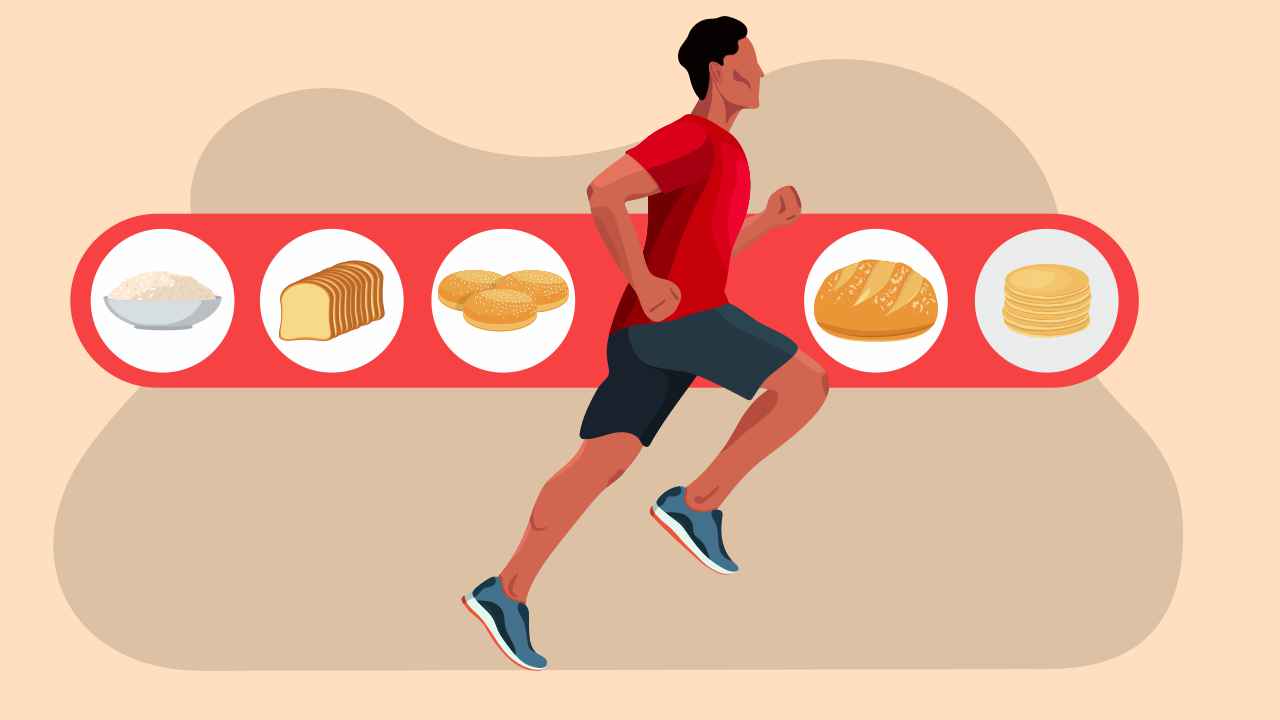
Crafting Your Personalized Carb-Loading Plan: A Step-by-Step Guide
Now that you understand the science and considerations surrounding carb loading, it’s time to craft a personalized plan optimized for your specific needs.
Here’s a step-by-step approach to guide you:
1. Determine Your Event Duration and Intensity:
The effectiveness of carb loading hinges on the demands of your event. If you’re tackling a marathon or cycling endurance race that stretches beyond 90 minutes, carb loading becomes a strategic advantage.
However, for shorter, high-intensity activities like sprint races, the benefits are less pronounced.
2. Calculate Your Carbohydrate Needs:
The optimal daily carbohydrate intake during the loading phase falls within the range of 3.6-5.5 grams per pound of body weight. Here’s a simple formula to determine your personalized target:
Daily Carbohydrate Intake (grams) = Body Weight (pounds) x 3.6 – 5.5
For example, if you weigh 150 pounds, your target daily carbohydrate intake would range from 540 grams (150 x 3.6) to 825 grams (150 x 5.5).
3. Plan Your Depletion and Loading Phases:
The traditional carb-loading protocol involves a 3-day approach:
-
Days 1-3: Gradually reduce your carbohydrate intake to around 40-50% of your daily calories. This encourages your body to upregulate glycogen production enzymes.
-
Days 4-5: Increase your carbohydrate intake to your calculated target range (3.6-5.5 grams per pound of body weight). Focus on complex carbohydrates like whole grains, fruits, and starchy vegetables.
-
Day 6 (Race Day -24 hours): Slightly decrease your carbohydrate intake (around 60-70% of calories) while prioritizing easily digestible options like fruits and white rice. This ensures your digestive system is primed for efficient energy absorption during the race.
4. Prioritize Nutrient Balance:
While carbohydrates take center stage during carb loading, don’t neglect other essential nutrients. Include lean protein sources like chicken, fish, or tofu in your meals to support muscle repair and growth.
Healthy fats from sources like avocado, nuts, and seeds also play a crucial role in hormone regulation and satiety.
5. Experiment and Individualize:
The above framework provides a general guideline. The ideal carb-loading approach can vary based on individual tolerance and digestive response.
Experiment in the weeks leading up to your event, tweaking your depletion and loading phases, carbohydrate sources, and portion sizes to find what works best for you.
Pay close attention to how your body reacts to different foods and adjust accordingly.
Remember, consistency is key. Practice your carb-loading strategy during training runs or simulations to identify any potential issues and refine your approach before race day.

Sample Carb-Loading Meal Plans: Fueling for Different Needs
Here are some sample meal plans tailored to various preferences and dietary needs to jumpstart your carb-loading journey:
The Classic Athlete:
-
Breakfast (Day 4): Oatmeal with berries, nuts, and a drizzle of honey; scrambled eggs with whole-wheat toast and avocado
-
Lunch (Day 4): Chicken breast with brown rice and roasted vegetables; side salad with vinaigrette dressing
-
Dinner (Day 4): Salmon with quinoa and roasted sweet potato; steamed broccoli
-
Snacks (Throughout the Day): Banana with almond butter; yogurt with granola and berries; whole-wheat crackers with hummus
The Vegetarian Athlete:
-
Breakfast (Day 4): Greek yogurt with chia seeds, fruit, and granola
-
Lunch (Day 4): Lentil soup with whole-wheat bread; side salad with balsamic vinaigrette
-
Dinner (Day 4): Veggie burger on a whole-wheat bun with sweet potato fries
-
Snacks (Throughout the Day): Cottage cheese with fruit; trail mix with nuts, seeds, and dried fruit; veggie sticks with hummus
The Gluten-Free Athlete:
-
Breakfast (Day 4): Gluten-free oatmeal with berries and nuts; chia pudding with almond milk and fruit
-
Lunch (Day 4): Grilled chicken or fish with brown rice or quinoa; steamed vegetables
-
Dinner (Day 4): Shrimp stir-fry with brown rice noodles and mixed vegetables
-
Snacks (Throughout the Day): Apple slices with almond butter; rice cakes with avocado; veggie sticks with guacamole
Remember, these are just sample templates. Feel free to adjust portion sizes, ingredients, and timings based on your individual preferences and caloric needs.

Powering Through the Race: Pre-Event and During-Event Considerations
Your carb-loading strategy doesn’t end after your final pre-race meal.
Here’s how to optimize your fueling for peak performance on race day:
Pre-Event:
-
Hydration is Key: Start hydrating adequately in the days leading up to your event. Aim to consume clear fluids like water or electrolyte-enhanced beverages throughout the day.
-
The Pre-Race Meal (3-4 Hours Before): Focus on easily digestible carbohydrates and a moderate amount of protein for sustained energy. Examples include a bagel with peanut butter and banana, oatmeal with fruit and nuts, or a sports drink with a protein bar.
-
The Top-Up (1-2 Hours Before): A small, easily digestible snack like a banana, energy gel, or sports drink can provide a final burst of readily available energy.
During the Event:
-
Fueling on the Fly: Your body can only store a limited amount of carbohydrates. During prolonged events, aim to consume 30-60 grams of carbohydrates per hour to maintain glycogen stores and energy levels. Sports drinks, energy gels, chews, or even dried fruit can be effective options.
-
Listen to Your Body: Pay attention to hunger cues and adjust your fueling strategy accordingly. Experiment during training runs to determine the frequency and types of carbohydrates that work best for you.
-
Don’t Forget Hydration: Continue sipping on water or electrolyte drinks throughout your event to prevent dehydration, which can significantly hinder performance.

Beyond the Finish Line: Recovery Strategies
While crossing the finish line is a momentous achievement, the recovery phase is equally crucial.
Here are some tips to help you refuel and rebuild after your race:
-
The Post-Race Window: Within 30 minutes of finishing your event, consume a combination of carbohydrates and protein to replenish glycogen stores and initiate muscle repair. A recovery drink, chocolate milk, or a sandwich with lean protein and fruit are good choices.
-
Replenish Fluids and Electrolytes: Dehydration is common after strenuous exercise. Prioritize rehydration with water or electrolyte-rich beverages.
-
Prioritize Rest and Sleep: Allow your body ample time to recover. Prioritize quality sleep and listen to your body’s cues regarding rest and activity levels.
-
Balanced Meals: In the following days, focus on consuming a balanced diet rich in fruits, vegetables, whole grains, and lean protein to support muscle recovery and overall well-being.
Frequently Asked Questions (FAQs)
Is carb loading necessary for all athletes?
Carb loading is most beneficial for endurance athletes participating in events exceeding 90 minutes. For shorter, high-intensity activities, the benefits are less pronounced.
Can I carb load as a vegetarian or vegan athlete?
Absolutely! There are numerous plant-based options rich in complex carbohydrates, like lentils, quinoa, brown rice, and whole-wheat pasta. You can also incorporate protein sources like beans, tofu, and tempeh to create balanced and effective carb-loading meals.
What if I experience digestive discomfort during carb loading?
This can happen, especially if you’re not accustomed to a high-carbohydrate diet. Experiment with different carbohydrate sources and portion sizes to find what works best for your digestive system. Consider spreading your carbohydrate intake throughout the day rather than consuming large meals.
Will I gain weight from carb loading?
You might experience a slight temporary weight gain due to increased glycogen stores and water retention. However, this is not fat gain and will normalize after your event.
How can I ensure I’m properly hydrated during carb loading?
Hydration is crucial throughout the carb-loading process and your overall training regimen. Aim to consume clear fluids like water or electrolyte-enhanced beverages regularly throughout the day.
Reference Links:
Carb-Loading Meal Plans for Endurance Athletes:
- Reference for Carb Depletion and Loading Phases: https://www.precisionnutrition.com/all-about-carb-cycling
- Carbohydrate Recommendations for Athletes: https://pubmed.ncbi.nlm.nih.gov/19225360/
- Importance of Nutrient Balance for Athletes: https://stillmed.olympic.org/media/Document%20Library/OlympicOrg/IOC/Who-We-Are/Commissions/Medical-and-Scientific-Commission/EN-Nutrition-for-Athletes.pdf
Sample Carb-Loading Meal Plans:
- Sample Gluten-Free Meal Ideas: https://youthsportnutrition.com/blogs/teamysn-forum/gluten-free-athlete-how-to-fuel-on-a-gluten-free-diet
- Vegetarian Options for Athletes: http://www.gssiweb.org/sports-science-exchange/article/vegetarian-and-vegan-diets-for-athletic-training-and-performance
Powering Through the Race: Pre-Event and During-Event Considerations:
- Pre-Race Meal Recommendations: https://www.acefitness.org/fitfacts/pdfs/fitfacts/itemid_213.pdf
- Importance of Hydration for Athletes: https://www.nata.org/sites/default/files/hydration-guidelines_handout.pdf
Beyond the Finish Line: Recovery Strategies:
- Post-Race Recovery Window: https://www.outsideonline.com/health/training-performance/metabolomics-research-marathon-recovery/
- Importance of Sleep for Athletes: https://www.sleepfoundation.org/physical-activity/athletic-performance-and-sleep

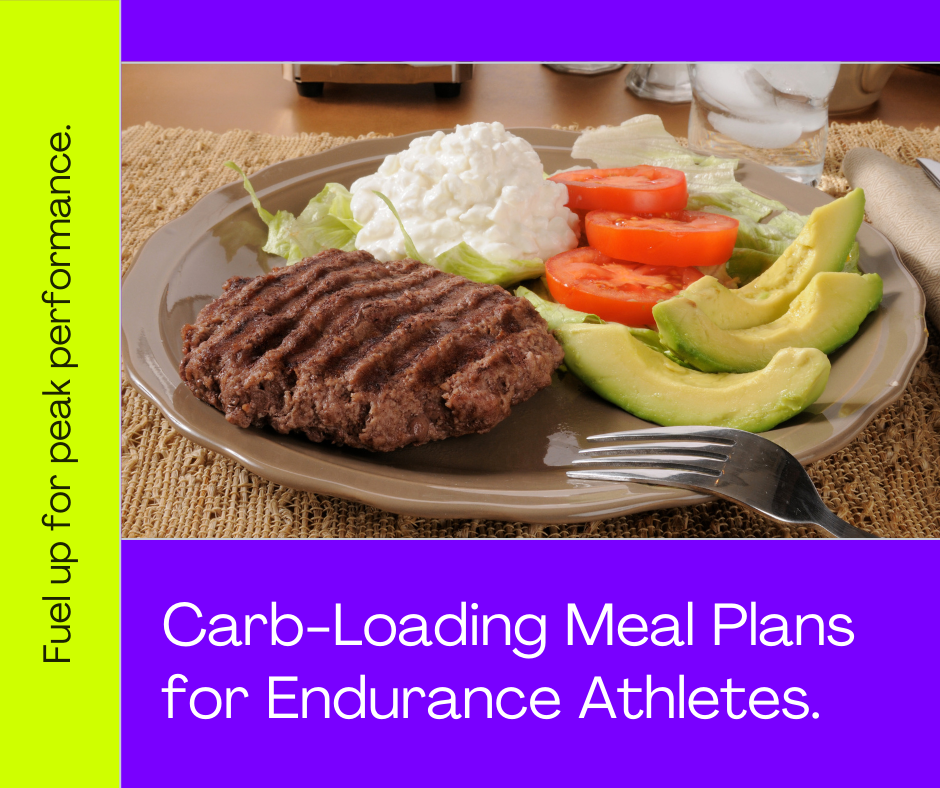




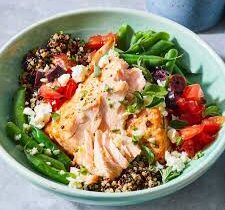
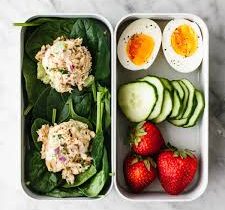
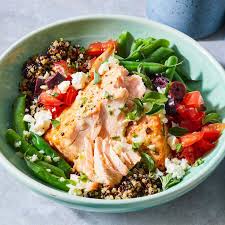
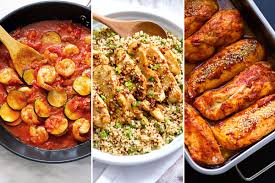



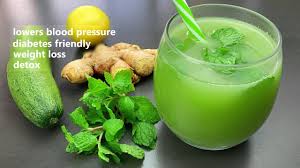

Leave a Reply